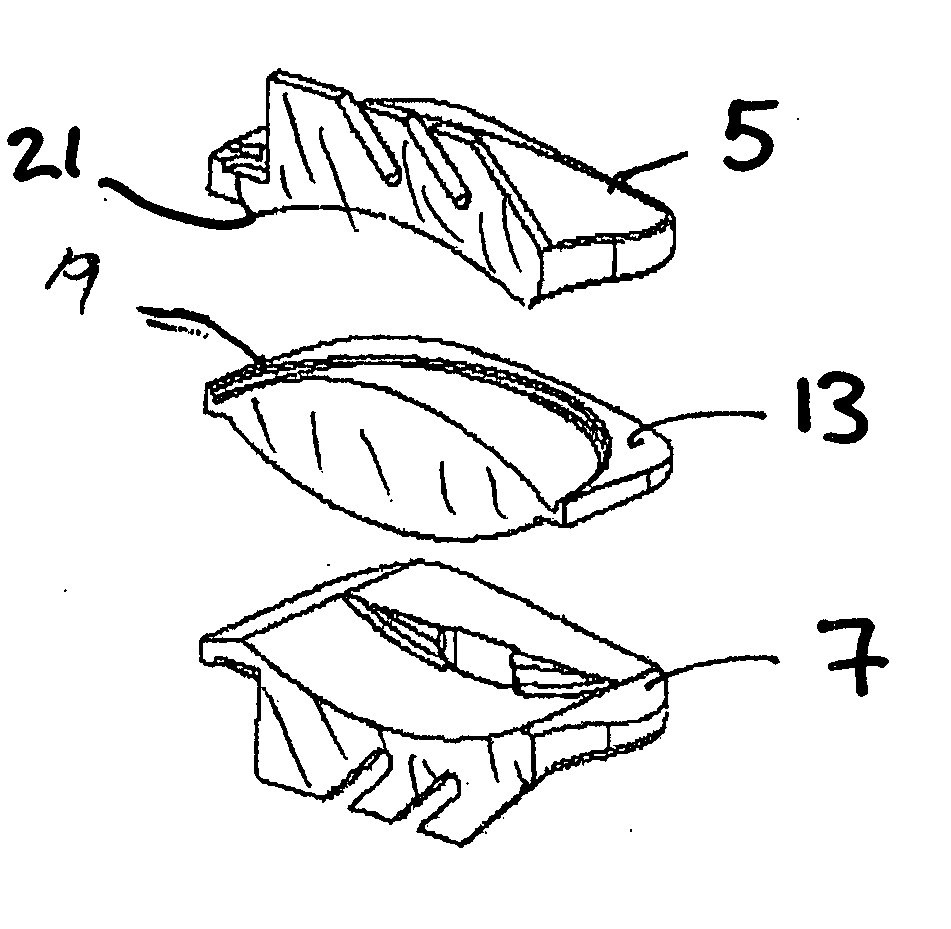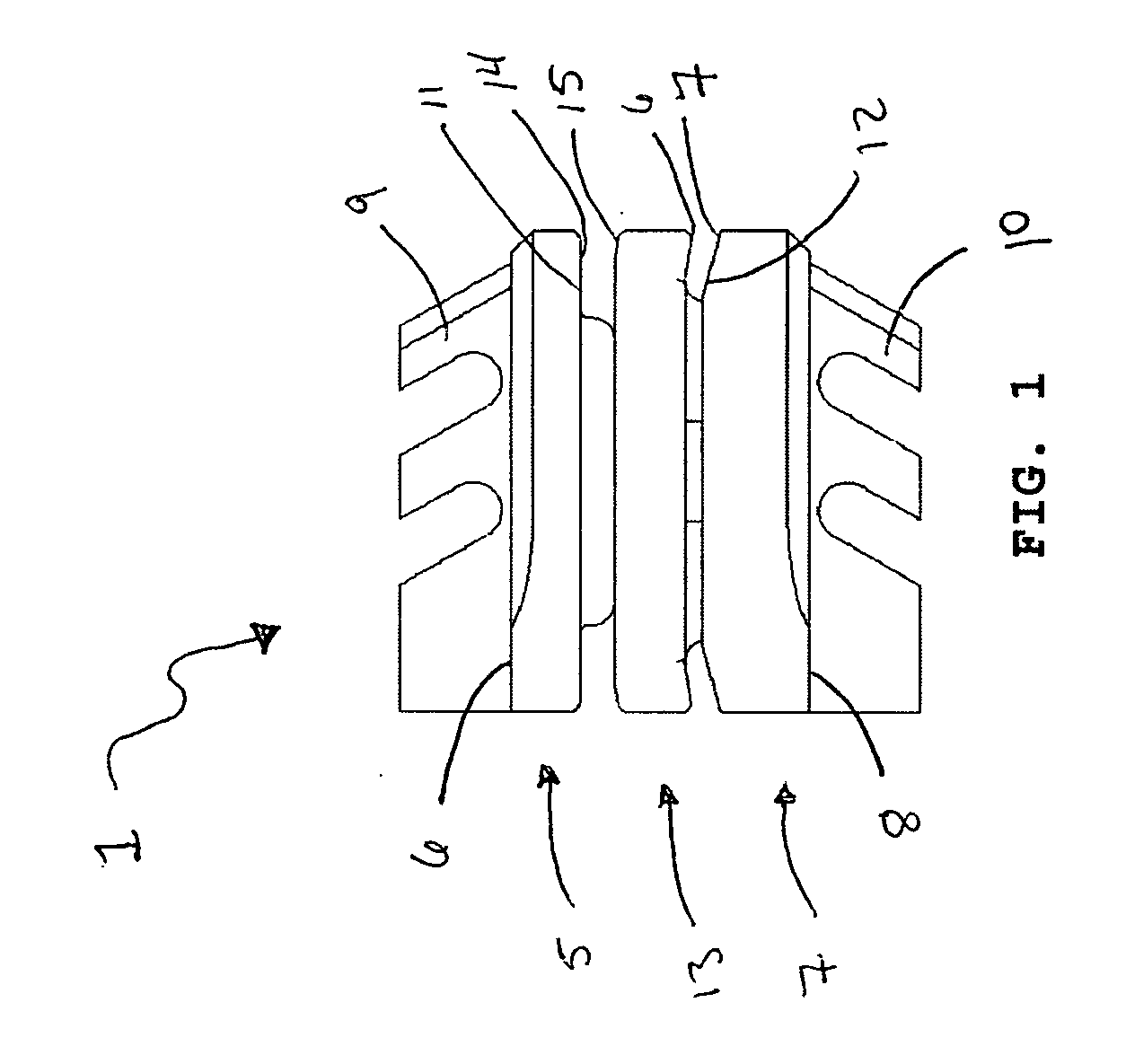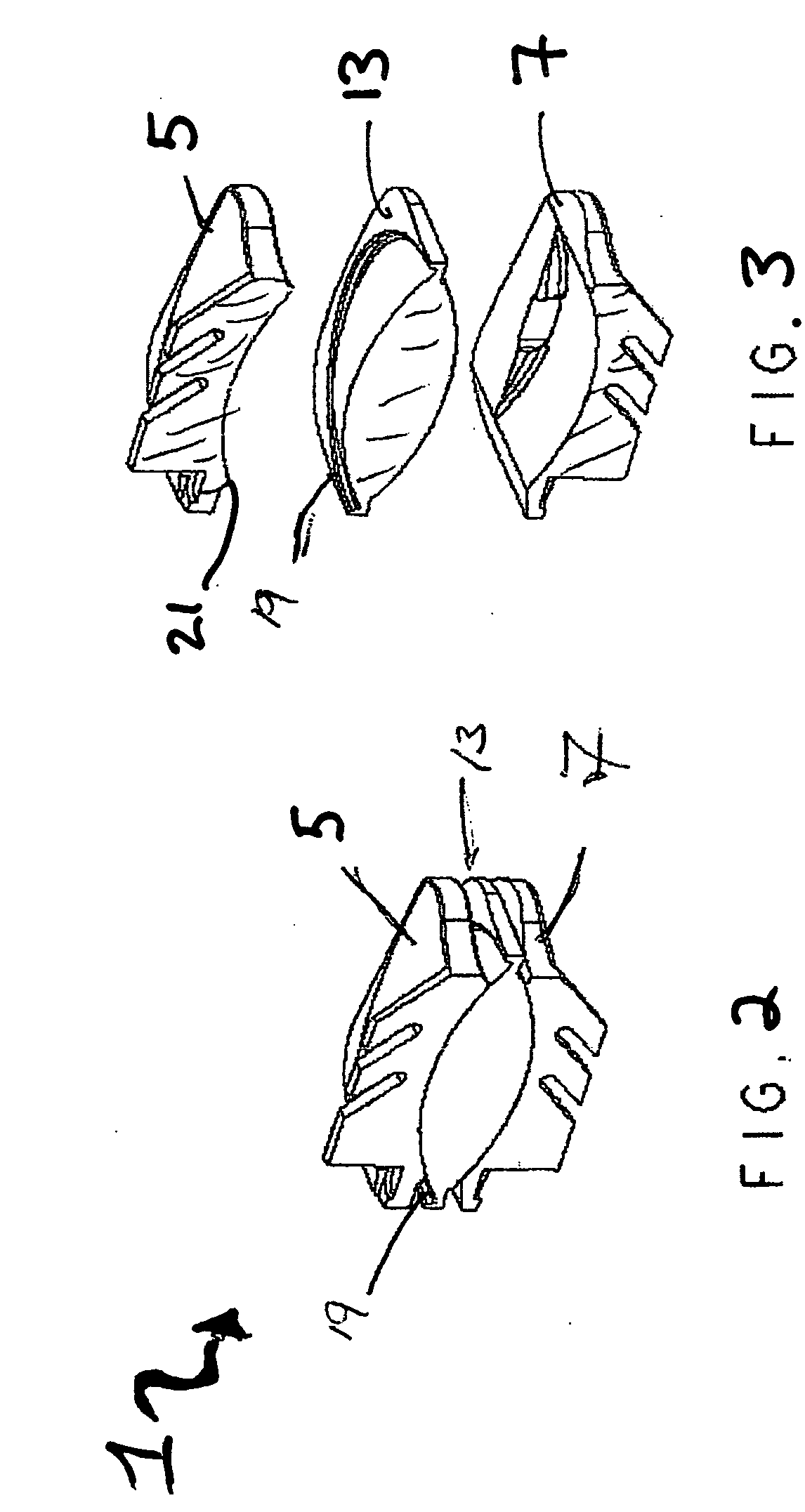Anterior prosthetic spinal disc replacement
a prosthetic and spinal disc technology, applied in the field of prosthetic spinal discs, can solve the problems of spinal disc displacement or damage, leg pain, loss of muscle control, and even paralysis, and achieve the effects of reducing the risk of spinal disc damage, and improving the quality of li
- Summary
- Abstract
- Description
- Claims
- Application Information
AI Technical Summary
Benefits of technology
Problems solved by technology
Method used
Image
Examples
Embodiment Construction
[0055] The present invention relates generally to a prosthetic spinal disc for replacing a damaged disc between two vertebrae of a spine. The present invention also relates to a method for implanting a prosthetic spinal disc via anterior implantation. In particular, the present invention encompasses a method for implanting the prosthetic spinal disc via an anterior approach.
[0056] As described in detail below, the prosthetic spinal disc may be articulating or non-articulating.
[0057] Several embodiments of the invention illustrate different examples of how the interfacing surfaces of an articulating prosthetic disc may be formed. For instance, articulation may be accomplished with one interfacing surface, such as a ball and joint, or alternatively may be accomplished with two or more interfacing surfaces such as a core disposed between an upper and lower articulating surface. The configuration of the surface contact may vary to permit or restrict different types and ranges of motio...
PUM
| Property | Measurement | Unit |
|---|---|---|
| height | aaaaa | aaaaa |
| height | aaaaa | aaaaa |
| angle | aaaaa | aaaaa |
Abstract
Description
Claims
Application Information
 Login to View More
Login to View More - R&D
- Intellectual Property
- Life Sciences
- Materials
- Tech Scout
- Unparalleled Data Quality
- Higher Quality Content
- 60% Fewer Hallucinations
Browse by: Latest US Patents, China's latest patents, Technical Efficacy Thesaurus, Application Domain, Technology Topic, Popular Technical Reports.
© 2025 PatSnap. All rights reserved.Legal|Privacy policy|Modern Slavery Act Transparency Statement|Sitemap|About US| Contact US: help@patsnap.com



